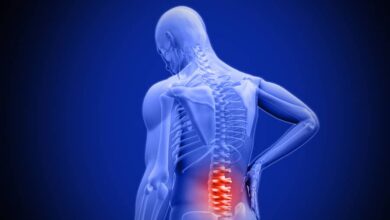Lead Poisoning: Why is Lead awareness important?
Are you interested to know what lead poisoning exactly is? Then you are in the right place where we have talked about lead poisoning and shared the lead awareness, So without any further ado, let’s have a look;
Do you know that lead is present in all aspects of the world, including the atmosphere, soil, water, and homes? However, lead is also available in paints, batteries, and plumbing materials.
Despite advancements in public health policy and massive reduction of blood lead levels (BLLs) in adulthood, lead poisoning continues to be a significant health concern worldwide, as per the Centers for Disease Control and Protection. Work-related increased levels in blood accounted for nearly 95% of all blood lead levels observed within adults in the U.s.
Perhaps a small amount of lead poisoning may cause serious illnesses and can be dangerous at high levels. So, if you want to learn more about lead poisoning, you can also take online lead training classes, which can be very helpful to you!
A complete guide to aware people from lead
Lead is a tough, grey-blue metalloid that can be found in the earth’s crust. Mining, smelting, production companies that produce a lead account for most industrial lead exposure.
However, lead is most generally associated with painting and paint as both traditional main ingredients till the bad impacts of lead paint were discovered. Moreover, it led to the industry’s restriction on its usage and the introduction of safer replacements such as latex.
Lead paint, which was commonly used until the 1970s, is still a risk for individuals working in deconstruction, remodelling, and general contracting industries, although the risk of exposure decreases when you have lead awareness.
The heart, brain, kidneys, even red blood cells also can be harmed by lead exposure. It could harm the reproductive system and cause bone and cartilage destruction. Itchiness can happen when lead particles come into contact with the body and eyes. However, Lead can be eaten or inhaled into the body.
It is absorbed by the consumption of lead-contaminated products and the use of water that has travelled through the oldest lead pipes. Inhaling air with lead dust or particles, including vapors from hot lead, also could cause it to be swallowed.
Goals for learning
- Determine the properties of lead and the factors of lead poisoning.
- Understand the risks of lead poisoning, as well as the signs and symptoms of lead exposure.
- Consider that your employer has to reduce your lead levels by identifying lead awareness and recognizeworkplace issues, adopting work practice limits, and implementing a health monitoring program.
- Recognize that it is your job to minimize your lead levels by wearing the correct PPE, such as breathing protection.
- To keep yourself safe from lead poisoning, learn about good hygiene practices.
The maximum acceptable dose for aerial lead, or the quantity of lead that a common individual may safely accept throughout an 8-hour workday, generally 50 micrograms of lead per cubic meter. Avoiding sun exposure to lead by keeping it well below this amount is prevention.
Companies that provide lead awareness training to their Employers have also offered personal protective equipment (PPE) to manage the risk when lead levels reach the action limit. Replacement of Lead and lead-containing items with less or non-toxic substances, including latex paint rather than lead paint, is the most important technique to decrease airborne lead.
Methods of removing lead or lead-containing products
There are several online lead training methods for removing lead or lead-containing products. The entire thing, for example, can be destroyed and replaced.
Lead-containing materials can be coated with a different substance. Check state and also (OSHA) federal Occupational Safety & Health Administration and (EPA) Environmental Protection Agency standards before eliminating lead-containing materials.
Workers who have been exposed to lead in exceeding the acceptable exposure level must have access to changing rooms, showers, and charcoal filters cafeterias. Since lead toxicity presents unique concerns for children, no clothing or apparatus used during the job may be taken home after washing.
Therefore, Safety clothing and equipment are not authorized in lunchrooms until surface pollution is cleared using a vacuum, downflow booths, or other cleaning techniques. Hand cleaning and face cleansing before consuming, eating, vaping, or using cosmetics should be heavily recommended, if not required, whenever employees are exposed to lead particles.
Protective clothes to avoid lead particles from the body
Workers who are exposed to levels of lead well above maximum levels of exposure or to potentially toxic such as lead arsenate or lead azide should wear protective clothing to avoid eye and skin irritation. Full-body clothing, headwear, gloves, boots, shoe coverlets, face masks, and vented glasses are all types of protective clothing.
Signs must still be placed in work locations wherein lead is a risk to alert workers to the presence of a lead risk. The ability of the workforce to learn and follow best lead awareness training for managing with lead is dependent on their level of awareness.
Employers are obligated to get and ensure the use of respiratory protection when lead pollution is not maintained underneath the PEL by the other methods. To protect against airborne lead, it is critical that workers receive instruction on how to wear respirators and that respirators are properly fitted. Respirators must be fit tested by the employer to ensure that they provide suitable protection.
If workers experience difficulties breathing throughout a fit test or even wearing a mask, they should be given a medical evaluation to see whether they can properly wear one.
● Preventing Lead Poisoning
Children should be protected from lead poisoning because it is essential for especially people’s long-term health. However, there is not some things like a safe blood lead quantity in children. Especially low blood levels of lead have already been found to impact learning, concentration, and educational success. Whereas the impacts of lead poisoning may be severe, then you should take more research for lead awareness that can take to avoid further exposure and decrease risk to their children’s health if detected in time.
If you want to prevent from exposure of lead before something occurs, than the most significant aspect that parents and carers, as well as healthcare providers, and public health officials can do.













